Gerbera jamesonii
Sometime in the 1920s, my great-grandmother planted a selection of Gerbera jamesonii along the side of her cottage.
Her Barberton daisies, as she called them, thrived in the same garden bed for almost 100 years until the current owner decided they had to go.
I had a couple of hours to get there, dig them up, unceremoniously dump them into buckets, and drive them to their new forever home. It was an honor to be entrusted with such a beautiful symbol of my family’s history.
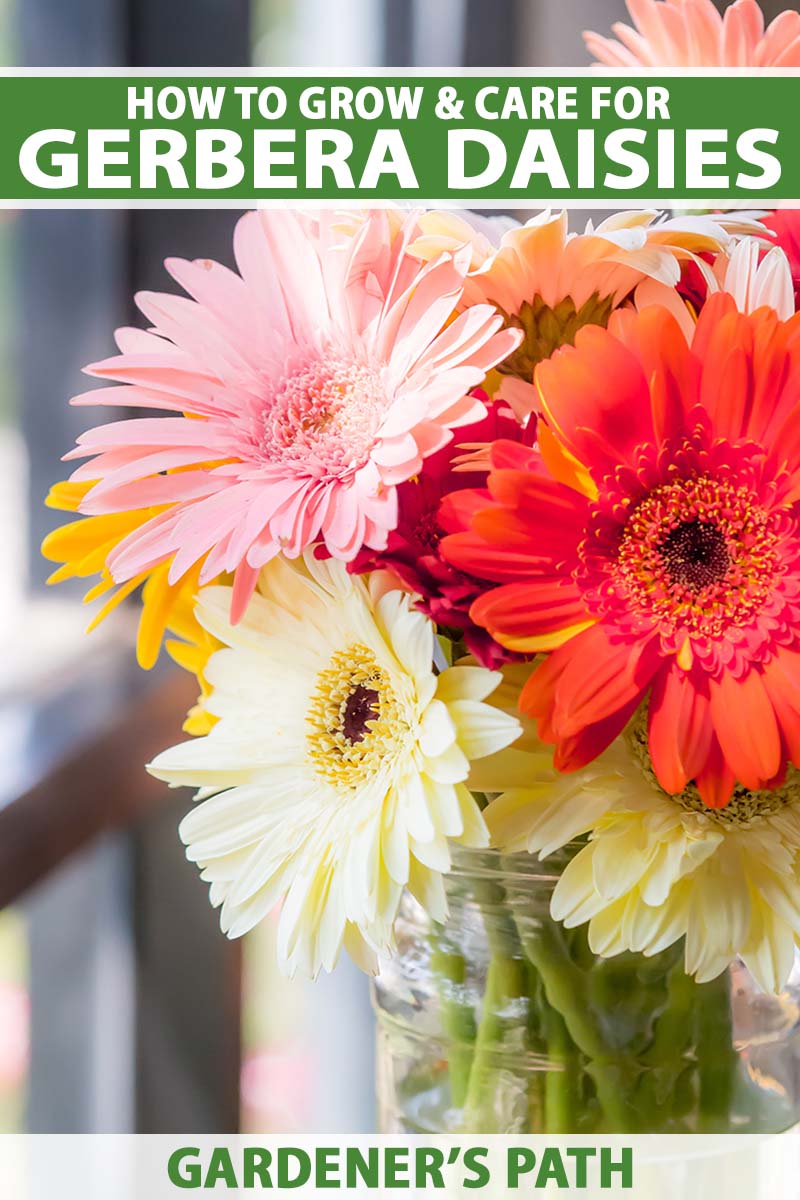
We link to vendors to help you find relevant products. If you buy from one of our links, we may earn a commission.
G. jamesonii are one of the world’s top 10 best-selling cut flowers, and third favorite in the US, behind tulips and ornamental lilies. There are thousands of hybrids and you’ll often see them in bouquets or decorating dinner tables at weddings.
Despite my lack of experience with these plants, I managed to successfully grow my great-grandmother’s gerberas for almost 10 years, until one particularly wet winter when the crowns rotted away unnoticed in the sodden soil.
This spring, I’m sowing a new generation. As you’ll see, if you can get a few fundamentals right, these bright, sweet flowers are easy to grow, and can last you a lifetime.
Here’s what we’re going to cover:
What You’ll Learn
Cultivation and History
G. jamesonii is a perennial flowering herb, native to South Africa. It’s a member of the genus Gerbera, part of the Asteraceae (aster) family.
It’s also known as the Barberton daisy, after the town of Barberton, close to where botanists first spotted it.
You may also hear it called the Transvaal daisy, named after the wider region. Its growing range in cultivation encompasses USDA Hardiness Zones 8a to 10b.
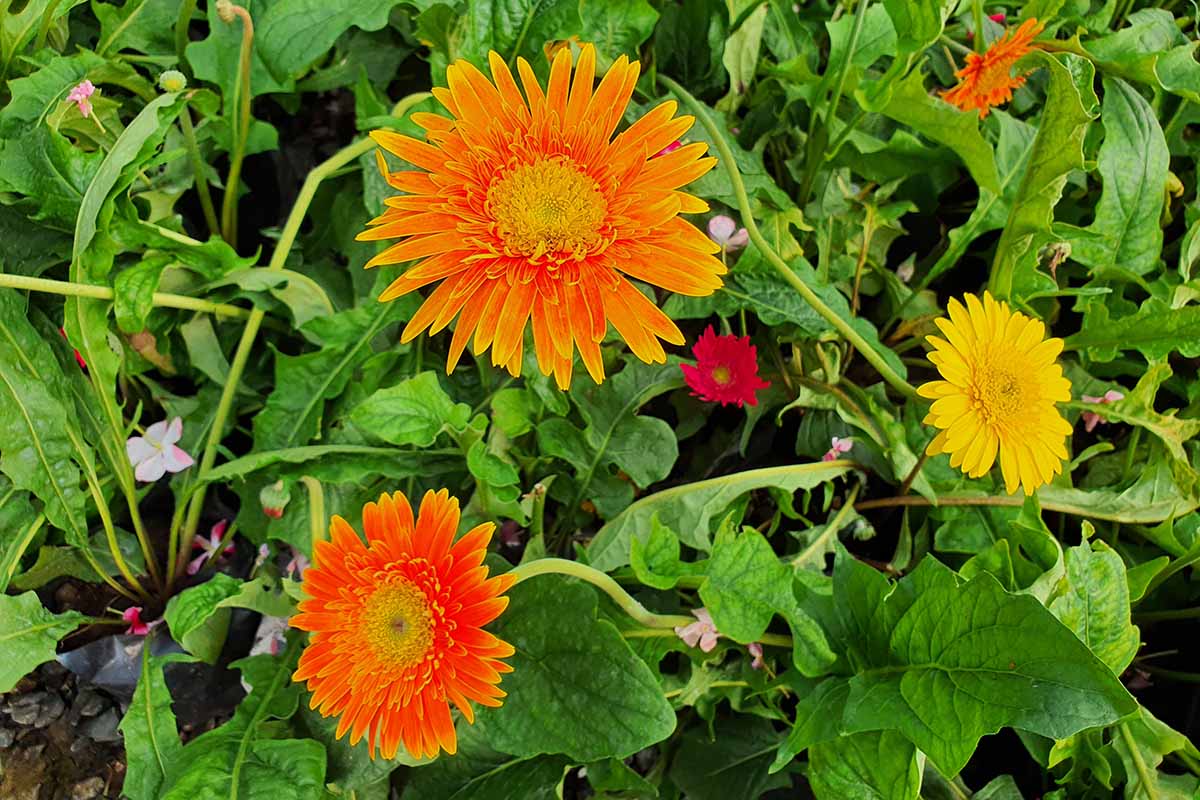
The bright, bold G. jamesonii flowers were an instant hit with nursery growers, and 140 years later, they’re still enormously popular. There are 30 species of Gerbera, but the thousands of cultivars developed for the commercial cut flower industry worldwide are mostly G. jamesonii hybrids.
The original flowers found growing in the wild had long, narrow petals like rays of the sun in a simple color palette of red, yellow, and orange.
Today, cultivars mostly have flatter heads of tightly grouped petals approximately four inches across.
These are either single layers of petals, semi-doubles with a second, smaller ring of petals on the inside, doubles with two layers of full-sized petals, or spiders with narrow, shaggy petals.

This perennial plant may be grown outside year-round in regions with subtropical to tropical climates, tolerating temperatures as low as 20°F.
The foliage dies back over winter, then sprouts again in spring. In colder climates, it’s grown as an annual, unless you have a greenhouse or plant it in a pot and bring it inside when there’s a threat of frosts.
The lobed, velvety leaves grow from the crowns, and depending on the cultivar, these can be up to 20 inches long.
The stunning flowers come in an enormous range of colors, from soft whites, cream, and pale pastel pink through to hot red, orange, and bold, bicolored blooms.
Propagation
In the commercial gerbera growing industry, plants are propagated by the million using tissue cultures so they can produce flowers as fast as possible.
For home gardeners, the two best options are to grow from seed, or propagate new plants by division.
Seeds saved from a named cultivar will germinate, but they probably won’t flower in colors true to the parent plant. To clone the same flowers as the parent, you instead need to divide the crowns after flowering.
From Seed
G. jamesonii seed quality quickly deteriorates, so always sow fresh seeds in early spring. Seeds need a temperature of 70 to 75°F to germinate so it’s best to start them indoors or in a greenhouse.
You’ll need seed starter trays or two- to three-inch pots with drainage holes in the bottom for each seed. Fill with seed starter mix combined with some sand to improve drainage.
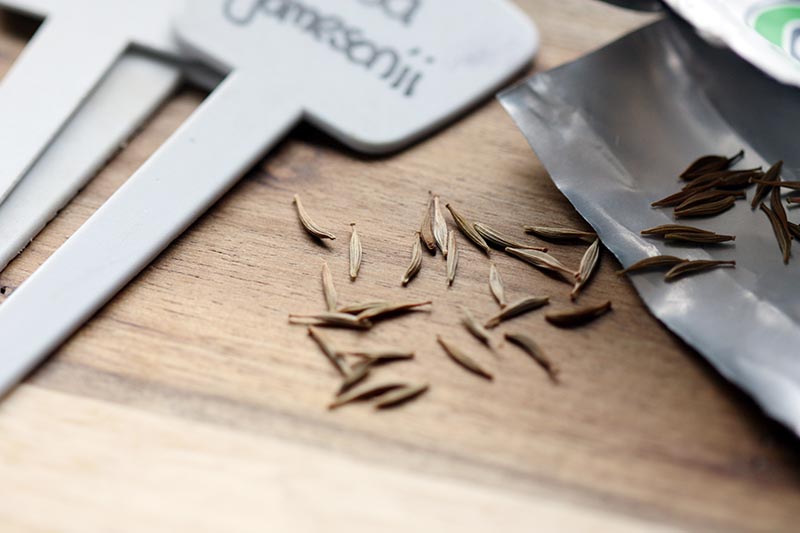
Gerbera seeds you save yourself will have a feather at one end, while seeds you buy may have the feather removed. Sow with the “feather” poking up out the top of the seed mix, one inch apart or one seed per pot.
If there’s no feather, sow with the longer, pointy end at the top.
Cover with a thin layer of seed mix, and press down firmly. Water well, until the seed mix has the same level of dampness as a well wrung-out sponge.
Cover the tray or pots with plastic wrap to help maintain moisture. Water gently so you don’t disturb the seeds. You don’t want the potting mix to dry out, but don’t let it become soggy either.
Germination can take two to three weeks. Remove the cover as soon as they sprout, as young plants are at risk of rotting or succumbing to fungal disease. Place them in a warm, sunny, airy location, and keep the soil damp, but not wet.
When seedlings have two true leaves or more, they can be transplanted into larger, individual grow pots. Choose containers three to four inches in size with drainage holes and fill them with a free-draining potting mix amended with sand.
Seedlings are greedy feeders. Use a liquid fertilizer from day 10 onwards according to the directions on the package.
Again, the soil needs to be damp, like a well wrung-out sponge, but not wet. Be careful not to splash the leaves as they’re very susceptible to fungal diseases.
By Division
Plants grown from divisions will be faster to flower than those grown from seed.
You can divide a mature plant and replant the sections. The best time to do this is when you see new growth in spring if plants are outside. If inside, this can be done after flowering finishes, or in spring.
Dig around the base of the plant, about four to six inches out from the root ball, or take the plant out of its container. Gently remove the soil from around the roots.
This will reveal the crowns at the base, where the stems meet the roots. A mature plant will have several crowns with multiple leafy stems growing off each one and each of these will have its own roots. They can be snapped off each other or cut off using sharp, clean secateurs or scissors.
Replant divisions as well as the parent plant in the garden if you’re in a subtropical area, or plant your divisions in new pots filled with a free-draining soil mix.
Keep well-watered, but not wet, and move potted divisions to a warm place over autumn and winter.
In tropical zones this could be done outside or on a patio, but in cooler regions, divisions will need to be kept in a greenhouse or inside your home.
Once divisions have started to grow new leaves, they can be transplanted outside if conditions are suitable as described below.
Nursery Starts/Transplanting
The easiest way to start is to buy a named cultivar from a nursery. This way, there’s a guarantee of the flower color, and the hard work of nurturing the young plant is already done for you.
You’ll also have the option of selecting “mini” cultivars, which are about half the size of standard plants.
These are a good option if you live in a cool region and bring plants inside when it’s cold, as they only need a pot half as big as what you’d need for a standard one – something about six inches in size as opposed to a 12-inch or larger container.
Transplant nursery-grown plants outside once the threat of frost has passed. If you want to keep them as indoor plants, they’ll need to be placed in an airy position with as much sun as possible.
Seedlings must be hardened off so they can survive once they’re transplanted.
A couple of weeks before planting them, start placing them outside in a sunny spot for a few hours at a time, but bring them inside overnight. Gradually extend the time they stay outside over that time.
Seedlings should be six to seven weeks old and at least two inches high with at least four to five true leaves to transplant successfully.
Plant out in late spring, when the threat of frosts has passed and nighttime temperatures are above 41°F, but ideally when it’s warmer than this.
Space them 12 to 18 inches apart, and ensure the crown is sitting at or just above ground level. Water in well, taking care not to splash the leaves.
Seedlings can also be planted into deep 12-inch-wide containers with drainage holes at the bottom.
Fill with a potting mix that drains well, create an impression in the center that’s about the size of the root ball, and plant so the base of the stem is at the soil level, then water in.
How to Grow Gerbera Daisies
Gerberas prefer a sheltered part of the garden with full sun in the morning, and partial shade in the afternoon.
In a subtropical or tropical climate, G. jamesonii are perennials that die back in winter and resprout in spring. However, in many parts of the US they’re grown as annuals as they can’t survive the winter chill.
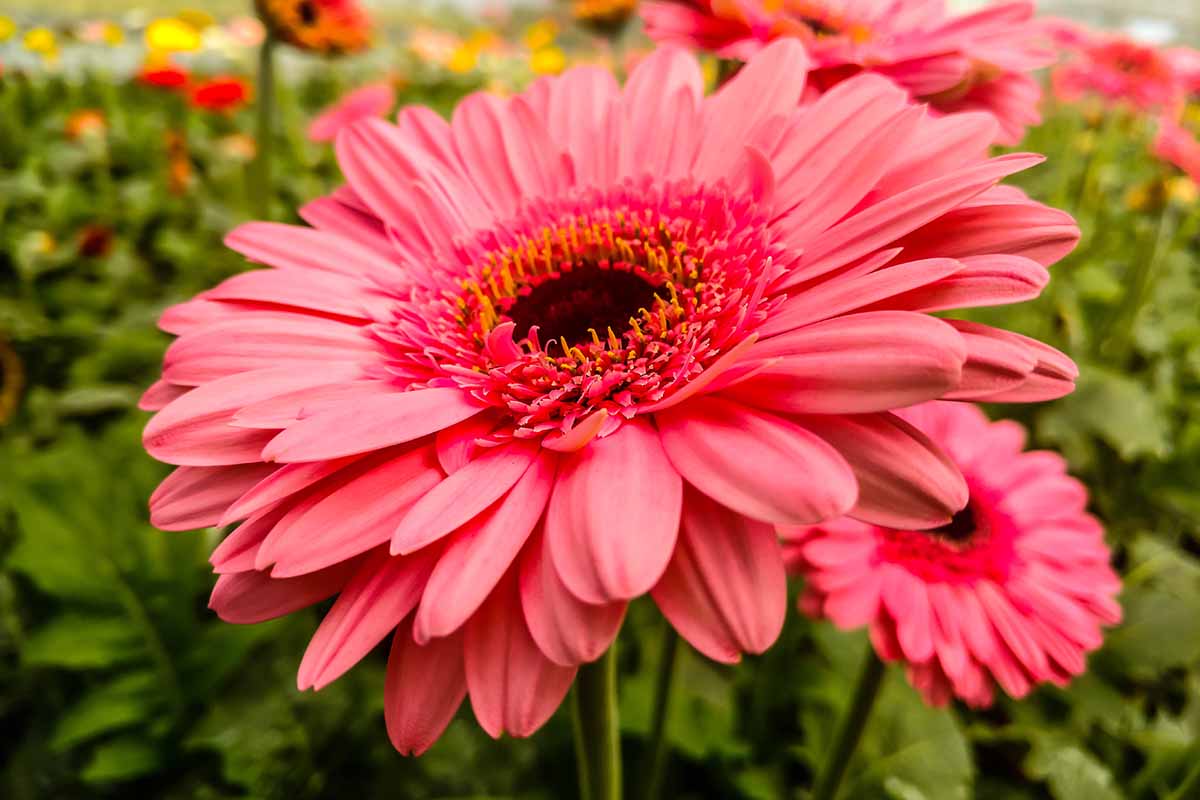
Another option if you’re in a cold region is to grow them in containers and bring them inside over the chilly months. Keep them in a warm, sunny spot.
G. jamesonii do best in dry, sandy, nutrient-enriched, free-draining soil with a pH of 5.5 to 6.5. If you have heavy soil, grow in aboveground mounded soil or raised beds filled with free-draining soil, or in containers.
If the top one to two inches of soil feels dry, water in the morning, so the crowns and soil have time to dry out during the day.
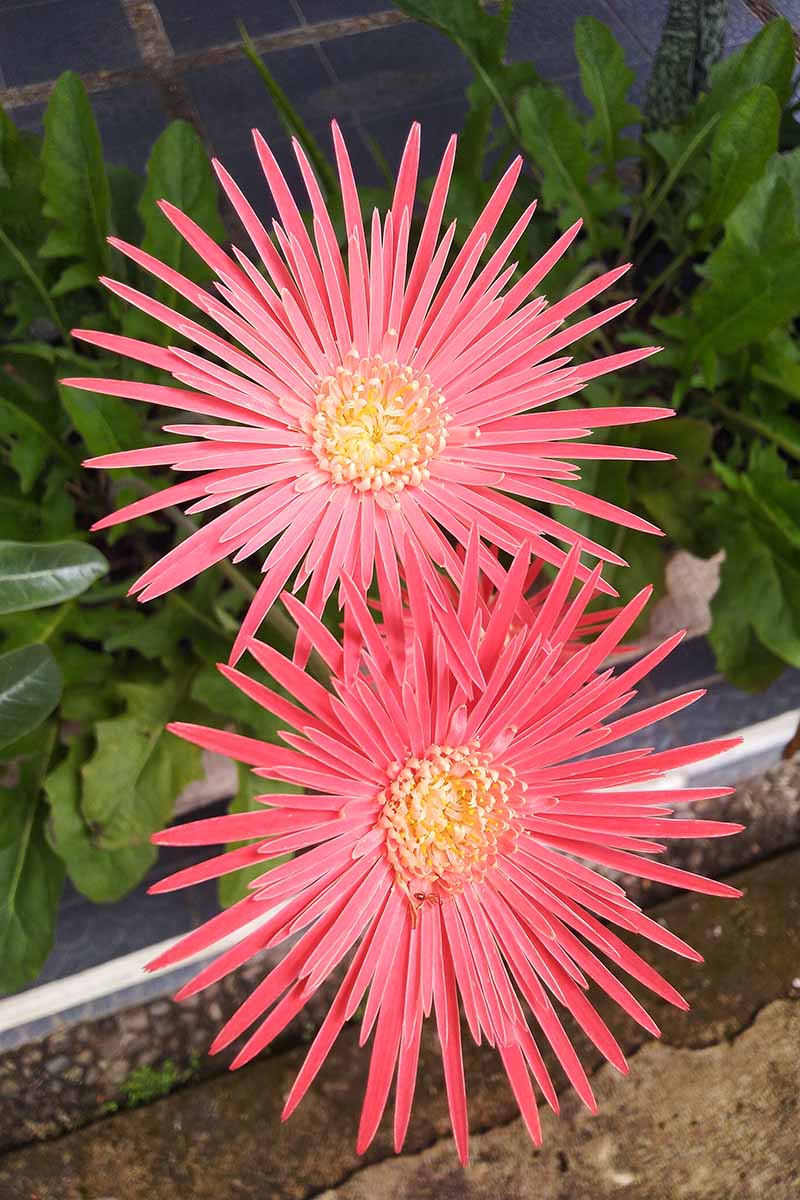
Don’t let the soil become waterlogged, as the crowns are very prone to rotting and this is the most common reason for them to die. I learned this the hard way, with the crowns of my plants rotting away due to waterlogged soil over one particularly wet winter.
Feed with a slow-release rose or flower fertilizer every eight to 12 weeks or use a general plant fertilizer once a month.
If your gerberas seem to have a shorter stature than the ones you’ve seen in certain photos online or in florists’ growhouses, don’t be alarmed! This isn’t because you did something wrong.
Some Gerbera varieties used for commercial cut flower production are bred to be larger, and the flowers have much longer stems so they’re easier for florists to arrange.
Growing Tips
- Plant in free-draining, sandy soil amended with well-rotted compost in a sunny, warm, sheltered garden.
- Ensure the crowns are at or just above soil level.
- Plant outside after the risk of frost has passed, 12 to 18 inches apart or 1 plant per 12-inch pot.
- Water at soil level when the top 1 to 2 inches of soil feels dry.
- Feed every 8 to 12 weeks with a rose or flower fertilizer, or use a general purpose fertilizer every month.
Maintenance
The most common reasons gerbera plants die are from overwatering or becoming waterlogged because the soil is not free-draining.
Lightly mulch around plants to help maintain soil moisture and reduce weed competition, but be careful not to bury the crowns.

A healthy plant will usually have at least four blooms at a given time when in season. Deadhead any you don’t pick for arrangements to encourage more flowers.
Plants that are growing permanently outside or in a container will slowly sink into the soil, covering the crown. They will need to be dug up and replanted or repotted every couple of years to ensure the crown stays uncovered and dry.
At the end of the season in cold zones, plants will die off due to the cold and the crown will rot in the soil if left there.
You can dig them up and transplant them into pots containing a free-draining potting mix if you are able to keep them inside over winter.
Ensure the crown is at soil level and stays dry. If this is not possible, you’ll need to treat your plants as annuals, and compost or dispose of them at the end of the season. You can sow seeds or buy new plants the following spring.
Another option for those in cold zones who want to grow gerberas in beds is to put them in pots, and bury the pots in the garden.
Cover the edges with mulch to hide them, and ensure the crowns are at or above soil level. Once temperatures begin to drop, dig up the pots and bring them inside.
G. jamesonii grown in pots will need to be divided every two to three years as described above, as the crowns will become overcrowded.
Cultivars to Select
You can buy packs of G. jamesonii seeds, such as the California Mixed Colors that includes yellow, orange, crimson, white, and pink varieties.
Packets of 25 seeds are available at Burpee.
There is a vast range of flower types, colors, and sizes available, from mini gerbera cultivars with two-inch flowers to large ones that are six inches across, available from nurseries nationwide as seeds or transplants.
I love the traditional hot red cultivars and the ones I inherited were very similar to the original G. jamesonii that grow in the wild in South Africa.
But it’s hard to resist the stunning pink tones of a cultivar such as ‘Garvinea Sweet Memories’ with its ring of hot pink petals, fading to a pale pastel blush around a golden center.
If you want to add this beauty to your garden you can find a bundle of four plants available at Burpee.
Looking for even more options? Check out our roundup of best gerbera cultivars. (coming soon!)
Managing Pests and Disease
The most common pests you may encounter are aphids, spider mites, whiteflies, and thrips. A neem oil spray will help to control them.
You can buy Bonide Neem Oil to treat your plants, available from Arbico Organics.
The most common disease issues for G. jamesonii are gray mold, powdery mildew, and other fungal diseases such as anthracnose.
To prevent these, only water in the morning at ground level, not from above, so you don’t splash the leaves. Let the soil dry out slightly before watering again.
Remove diseased leaves as soon as possible to prevent further spread.
Best Uses for Gerbera Daisies
Gerberas are one of the world’s most popular cut flowers, as they have such long-lasting blooms.

Cut stems last for two to three weeks in a vase if you keep the water clean and refresh it daily. Fluoridated water can significantly shorten the vase life of gerbera flowers, so use filtered or rain water.
They’re also gorgeous in the garden in borders, mass planted as large beds, and in containers either outside or inside.
The plants don’t grow tall, maxing out at 12 to 24 inches, so they are best placed at the front of beds.
Quick Reference Growing Guide
| Plant Type: | Perennial flower (annual in cooler regions) | Flower / Foliage Color: | Red, orange, yellow, white, cream, pink, bicolored/green |
| Native to: | South Africa | Tolerance: | Drought, heat |
| Hardiness (USDA Zone): | 8-10 | Maintenance: | Low-moderate |
| Bloom Time / Season: | Almost year-round (early summer to early autumn in cooler climates) | Soil Type: | Light, fertile, sandy loam |
| Exposure: | Full to part sun | Soil pH: | 5.5-6.5 |
| Spacing: | 1 inch (seeds), 12-18 inches (transplants) | Soil Drainage: | Well-draining |
| Planting Depth: | Light covering (seeds), crown at or slightly above soil level (transplants) | Attracts: | Birds, bees, other pollinating insects |
| Height: | 12-18 inches (standard), 6-12 inches (mini varieties) | Uses: | Beds, borders, containers, dry areas, mass planting |
| Spread: | 12+ inches, depending on cultivar | Order: | Asterales |
| Time to Maturity: | 4-6 months (from seed) | Family: | Asteraceae |
| Water Needs: | Moderate | Genus: | Gerbera |
| Common Pests and Diseases: | Aphids, spider mites, whiteflies, thrips; anthracnose, botrytis blight, crown rot, gray mold, powdery mildew | Species: | Jamesonii |
Share the Love
Gerberas are appreciated and enjoyed as a symbol of love every day
Whether you’re sending a bouquet to a friend to cheer them up, or celebrating the happiest day of your life, it’s likely that a bunch of colorful G. jamesonii are also there to share the love.
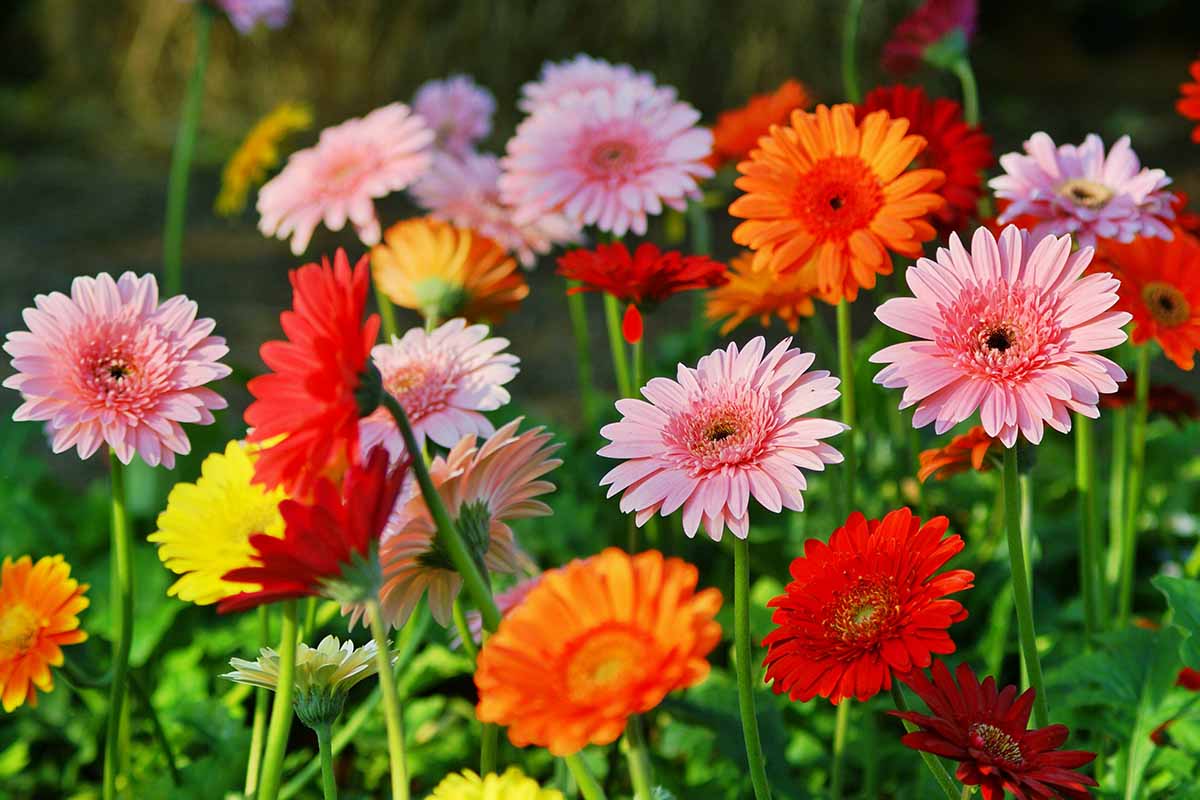
Even better is seeing these long-lasting flowers in a vase in your home every day, and they’re so easy to arrange, you’ll feel like you’re a florist.
Growing them is pure perfection. These are low-maintenance plants if you meet their soil requirements and err on the dry side of soil moisture.
Are you growing G. jamesonii in your garden? Let us know in the comments section below, and feel free to share a photo!
If you love the look of gerberas but your region is too cold, there are other similar-looking daisies you might like to consider:

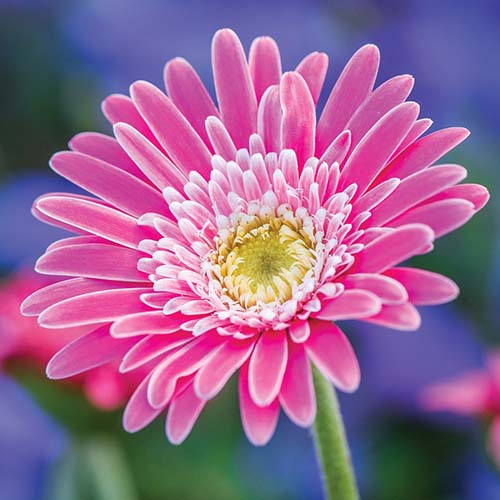
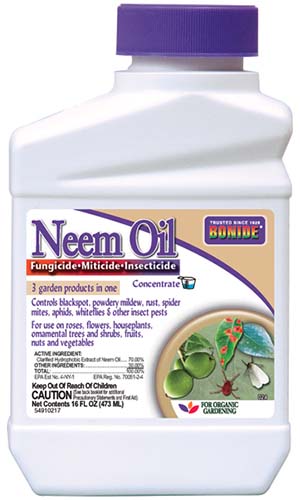
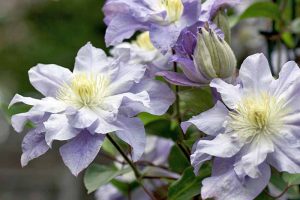
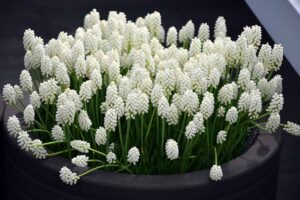
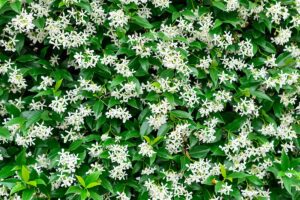
Garvinea Sweet memories is one of my favorites. But you have Garvinea Sweet Femmy In the image ( I already contacted burpee too) but Garvineas are really not to be compared to seed gerberas they really are so much better!! Best varieties in my opinion are Garvinea Sweet Sparkle, Garvinea Sweet Sunset, and Garvinea Majestic Burgundy. Have you tried any of the Patio Gerberas? Like Gerbera Patio Karoo, Gerbera Patio Daintree and Gerbera Patio Hot Springs? AMAZING VARIETIES!
Thanks for your message, Maz. I think you’re right, since ‘Sweet Memories’ is typically described as white and light pink while ‘Sweet Femmy’ is more of a hot pink, though I wonder if this could have been a photo editing issue. We did get this photo directly from Burpee.
So many of the flowers in the Sweet and Majestic series are beautiful- thank you for sharing your favorites! Perhaps we can cover the Patio varieties in a future roundup as well.